There’s nothing quite like fly fishing. However, as just about any beginner will tell you, if you want to take up this marvelous sport, there are quite a few things to learn. But before you get overwhelmed and give up on the idea, I want to answer the obvious question: is fly fishing hard?
In short, yes, fly fishing is hard when you first start out. However, like any other worthwhile skill, the more you practice, the easier it gets. From setting up your rig to learning how to cast a fly rod, with a little dedication, you can quickly improve your skills as an angler.
And seriously, it’s worth every bit of effort you put into it!
But what, exactly, will you need to learn?
And how difficult should you expect it to be?
Well, that’s what we’re going to cover for the rest of this guide.
Let’s wade in!
Disclaimer: This post may contain affiliate links, meaning we will receive a small commission (at no cost to you) if you click through and make a purchase.What Makes Fly Fishing Hard?
As mentioned above, learning how to fly fish is not generally thought of as an easy undertaking, which is why, as a percentage of people who enjoy some type of fishing, fly fishers comprise a small (but undeniably growing) slice of the worldwide fishing pie.
Over the years, I’ve seen people take to the sport with relative ease, while others seem to struggle for a while before the light goes on. The good news? Regardless of which category you fall into, if you commit to learning how to fly fish without letting the inevitable early frustrations dissuade you, your learning curve, though steep at first, should be short.
To that end, and along with tips to get through them with comparative ease, here are the 7 most important areas of fly fishing you’ll need to learn and understand.
1. Fly Fishing Equipment
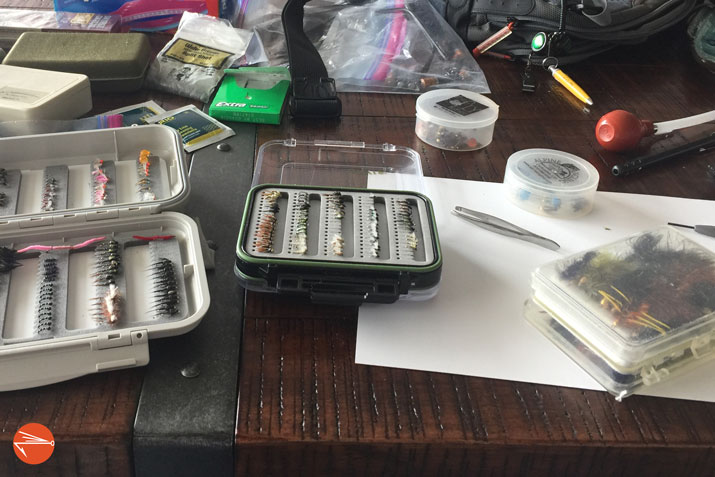
A while back, I asked one of my best fishing buddies’ girlfriend if she’d ever consider taking up fly fishing. I’ll never forget her answer: “I don’t have the costume!”
After my laughter subsided, I realized that, to a potentially new fly fisher, knowing what clothing, equipment and essential gear one might need in order to take up the sport just might be the primary impediment to getting started.
After all, no matter what we humans choose to undertake, the last thing a newbie wants is to look like a newbie.
Better to avoid it altogether, some might say (or feel, without saying).
Yes, the fly fishing “costume” consists of many pieces.
From rod & reel to line, leader, tippet, tools and flies, and from headwear, neck buffs, and polarized sunglasses to vests, waders and boots, the fully-equipped fly fishing angler takes on an easily identified persona that can be intimidating to a would-be beginner.
One of the easiest ways to knock down this wall (and, incidentally, many of the other potentially discouraging fly fishing barriers) is to hire a good guide for your first two or three days on the water.
If you’re a beginner, most reputable guide services will simply tell you what to wear so that you’re properly clothed for the anticipated weather conditions and, from there, will equip you with literally everything else you’ll need.
Although all good fly fishing guides will perform many of the basic functions you’ll eventually need to learn to do yourself, when you go out with a guide the first few times, the daunting equipment and gear questions will quickly disappear.
Related Post: Fly Fishing Gear For Beginners (Here’s What You Need)
2. Fly Fishing Knots
One rare day, several years ago, I was teaching my wife how to fly fish. After showing her the basics of rod and line setup, we were down to tying some of our first knots.
In this case, I’d shown her the line-to-leader Handshake Knot, which, of course, was no biggie.
From there, I showed her the Surgeon’s Knot for leader-to-tippet connection followed by the Clinch Knot for tippet to first fly.
While cinching up my fly and trimming off the tag end of my lovely and terribly complicated fly fishing knots, I looked at her with no small degree of condescending pride. Expecting fawning admiration for her ruggedly handsome and highly skilled mate, I encountered something entirely different: a decidedly unimpressed “so what” expression.
What the…!?
I had just given her her first glimpse into the highly-guarded vault that contains all the secrets only those of us in the fly fishing club know about.
She, in turn, regarded the privilege with the same level of reverence one might offer a shoebox of old rubber bands. “I use those same knots when I sew,” she said. “Oh,” I replied with slumping shoulders.
The truth is, we fly fishers use several different knots for connecting different parts of our rigs.
Learning which knot to use for each, and, of course, how to tie each of them can be a challenge for any beginner.
Happily, there are hundreds of knot-tying how-to diagrams and videos you can find online and, once you learn the four or five that we use most often, you’ll be in the club!
One good shortcut to learning how to tie the requisite group of knots is to watch and learn from an expert.
A good guide comes to mind, and most are happy to show you how to tie each knot and why he or she uses one knot versus another. If that doesn’t work, ask your sewing wife.
Once you’ve learned how to tie each knot, it’s a great idea to practice with a spool of cheap nylon fishing line when you’re not on the water trying to catch fish.
I used to practice knot tying over and over again while watching television at night. I passed that little knot-tying practice trinket along to my son, Zach, and he took to it like, well, a fish to water.
On the occasions we were both practicing our knots in front of the TV, we looked like two knitting grannies that should have been watching the Lawrence Welk Show.
I know. We’re weird.
3. Which Flies And Rigs To Use
Part of the enjoyment of fly fishing is learning what different situations, conditions, and fish behaviors have to do with the type of rig you decide to entice them with.
Of course, there is a wealth of information about this topic right here on Fly Fishing Fix, as well as many other online sources, but, for those of us who like to learn by seeing and doing, being inquisitive with, and observant of a guide or instructor is going to be our best bet.
While it may cost you some time and maybe a little frustration along the way, once you understand the basics, that’s when individual experimentation comes in. With it, your level of fly fishing fun and excitement will skyrocket.
Related Content:
- How To Tie A Dry Dropper Rig (5 Simple Steps)
- How To Tie A Double Nymph Rig? A Step-By-Step Guide
- 10 Baetis Nymph Patterns You Need To Try
- 25 Best Dry Flies For Colorado Fly Fishing
- Fly Fishing With Small Flies (The Complete Guide)
4. Fly Casting Techniques
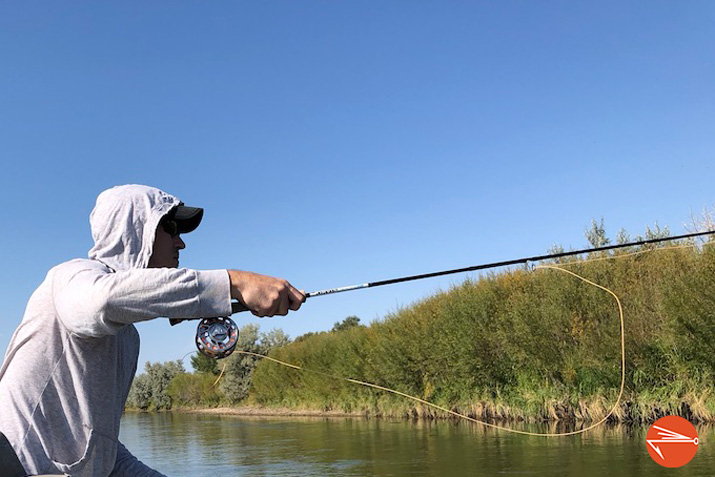
Although it wasn’t my favorite kind of fishing, I remember trudging down the road that led from our family’s mountain condo to the stocked pond at the base of Breckenridge Ski Area’s Peak 9.
With spin casters in one hand and our tackle boxes in the other, my brother and I would sometimes opt for hurling spoons, jigs and spinners over casting flies.
And, to be perfectly honest, at the time, I liked casting my spinning rod a lot more than I liked casting my fly rod. It was easier; I could cast one of those heavy lures a mile, and I didn’t need to worry about back cast snags.
Had it not been for the fish-mangling treble hooks and the inevitably hopeless reel and line snarls, I probably would have veered into spin casting as my primary fishing method.
Unfortunately, like swinging a baseball bat can be bad for your golf swing, spin casting was bad for my fly cast. And I think this is what often gets in the way of a beginner’s ability to learn the mechanics of a good fly casting motion.
Casting a fly rod is vastly different from spin casting, so I can always tell when someone new to fly fishing has had a lot of spin casting in their history.
Whether someone has had a spin casting influence or not, learning how to cast a fly rod can be a challenge. It involves a decent amount of hand-eye coordination and a high degree of patience.
The good news?
With practice, you’ll soon get the hang of it. Once you do, you’ll start to develop the feel of your rod and line “loading” just before you deliver a picturesque forecast that gently delivers a fly right where you targeted it to go.
Add an immediate and highly rewarding strike to that well-delivered fly and you’ll be forever hooked.
A common theme to this post, when it comes to the basics of fly casting, engaging a good guide or instructor right from the start will shorten your learning curve.
If that’s not immediately available, or if you just want to practice your skills on a whim, you can always take your fly rod out in the backyard or to a nearby park to practice.
Alternatively, if you want to practice your cast inside during a driving blizzard (or to just torment the cat while binging on Netflix movies), we recommend either Orvis’ Practicaster or Temple Fork’s Bug Launcher Office Practice Caster.
Both come in under $50 and are well worth the outlay. Just be careful if any little rugrats are about; you could put an eye out!
Oh, and don’t forget, there are hundreds, if not thousands of good fly casting demonstration videos online. More to come right here on Fly Fishing Fix too, by the way.
Related Post: 21 Common Fly Fishing Mistakes To Avoid
5. How To Read a River
When teaching a family member or friend how to fly fish, instructing them about how to read water is one of my favorite things to do.
It also seems to be one of the aspects of fly fishing that captures a pupil’s attention and interest more than anything else.
And though we call it “reading a river” it’s more accurately termed, “reading where to find feeding fish in a river.”
Oh, and once you get a bead on the basics of why fish congregate and feed where and how they do, it’s like you’ve been granted the code that unlocks an entirely new dimension — an Alice Through The Looking Glass kind of a thing, except without the creepiness.
Learning how to read water may seem difficult to a beginner, but the truth is that, with a little study, practice and experience, you’ll wonder why you ever found it intimidating.
And one other thing, when you find yourself craning your neck to admire a sweet bend or deep run while driving by some random river at sixty miles per hour, you’ll know you’ve made the leap into fly fishing obsession.
6. How To Handle Fish
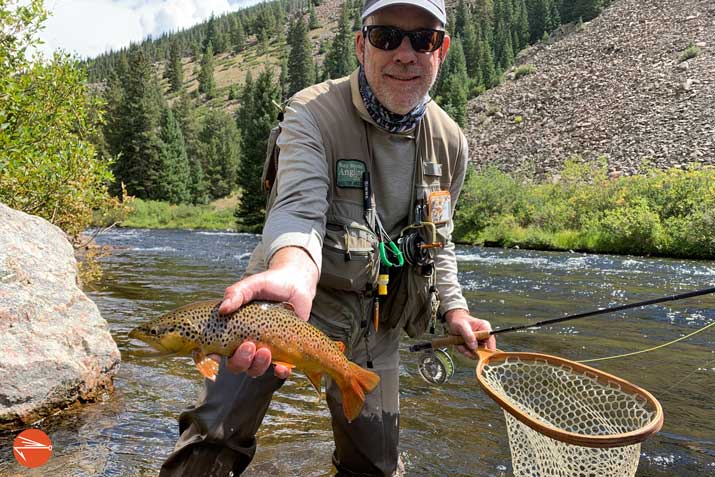
The thought of handling a hooked trout — knowing what to do with it once you actually catch one — can be an unsavory thought for many a fly fishing beginner.
Truthfully, there is a way to handle a trout you’ve caught on a fly, and a way not to. And it’s best to know how to do so correctly before that moment when you find yourself thinking, Oh crap, I caught one. Now what?
We fly fishers are amazingly like-minded when it comes to our catch-and-release philosophy.
The idea is to catch a fish in a way that gives them a fighting chance and then, if and when you net one, treat it gently and release it in such a way that it’s there for the next angler to catch.
I’ve even caught the same fish, in the same hole, during the same session, several times, so it’s evident that fish hooked on a fly, when handled correctly, recover quickly.
Therefore, it’s just as important for new fly fishers to know how to catch-and-release as it is to know how to catch-and-net.
Good thing Fly Fishing Fix has become the central repository for all things fly fishing (someday), so we encourage all fly fishing wannabes to avail themselves of this article for a good lesson on handling trout: How To Hold A Trout For Photos.
As a bonus, the article’s incredibly gifted author delivers near guru-like advice on how to hold them for amazingly awesome photos!
7. Learning Where To Fish
Okay men, when it comes to knowing where to fish, it’s perfectly within the acceptable guidelines of the Being a Typical Guy Handbook to ask for directions.
It’s obscure, but you can find it in Chapter 4 (How to Avoid Asking For Directions at All Cost), which falls right between Chapter 3 (How Not to Remember the Name of the First Song You and Your Wife Danced to at Your Wedding Reception) and Chapter 5 (How to Pretend You’re Working On a Big Project in the Garage When Your Mother-in-Law is Visiting).
Chapter 4, Subsection C, Paragraph 2a reads: It’s perfectly okay to violate the never ever, ever, ever, at all cost, ask for directions rule when finding a good fishing hole is at stake.
Honest, it’s there. Look it up!
Women, you simply don’t have this defect in your DNA, so I’m not at all worried about you finding great places to fish.
That said, if you withhold such information from us men, the Handbook also says that we’re allowed to not answer you if you ask us if something you’re wearing makes you look fat.
But I digress. One of the potential barriers to entry into the fly fishing club is simply knowing where in the heck to go when you want to cast a fly.
In addition to plenty of maps and fishing guides most states and locales provide, there is always the local fly shop, which is usually full of people who want to help you find a productive place to fish.
If you want to know their super-secret spots, on the other hand, it may cost you a few under-the-table bucks. Well-spent dough, if you ask me.
Related Post: Can You Fly Fish Anywhere?
Bonus: Learning How To Tie Flies

I asked a friend if he’d ever want to learn how to fly fish and his response opened my eyes to another potential impediment to learning how to fly fish. He said, “I’d love to learn how to do the fishing part, I just don’t know where I’d find the time to do the fly tying part.”
In his mind, fly fishing necessarily involved fly tying.
The two came hand-in-hand, and to his thinking, one could not do one without the other, and it made me wonder how many other would-be fly fishers had this in their mind.
To dispel this myth once and for all, either one can absolutely be done without the other.
In fact, I know people who only tie flies and I am one of those people who only fly fishes. Of course, many people do both and, while I admire their patience and full commitment to the entirety of the sport (and hobby), you can certainly learn to fly fish without learning to tie flies, and, for that matter, vice versa.
My son, Zach, is one of those who does both.
And, as all of those who engage in the two disciplines will tell you, he enjoys the special thrill of catching fish on flies he’s tied.
I know the basics of fly tying but, for whatever reason — lack of patience, lack of talent, chubby fingers — I would rather buy my flies than tie them. And in this, I am an unabashed expert!
So, if you want to include learning how to tie flies as part of your fly fishing immersion program, more power to you.
But if you just want to learn how to start catching fish on a fly, don’t think you have to include fly tying as a necessary part of the experience.
And, by all means, don’t get bogged down in the idea that fly fishing is too hard to learn.
After all, in the words of beloved Parks and Recreation character, Ron Swanson: “Give a man a fish and feed him for a day. Don’t teach a man to fish…and feed yourself. He’s a grown man. And fishing’s not that hard.”
Related Content:
- What is A Biot? Tying Flies With Goose And Turkey Biots
- San Juan Worm: Fly Pattern Profile
- Fly Tying For Beginners (The Ultimate Guide)
- Head Cement vs. Super Glue: What’s The Difference?
Final Thoughts
If Fly Fishing Fix does nothing else, we want to encourage people to take up the sport.
That is our passion.
You may have heard that fly fishing is a hard thing to pick up.
However, my hope is that this post has helped to break down the perceived barriers that have kept you from discovering one of the most enjoyable and rewarding things you can do with your clothes on.
Tight lines!

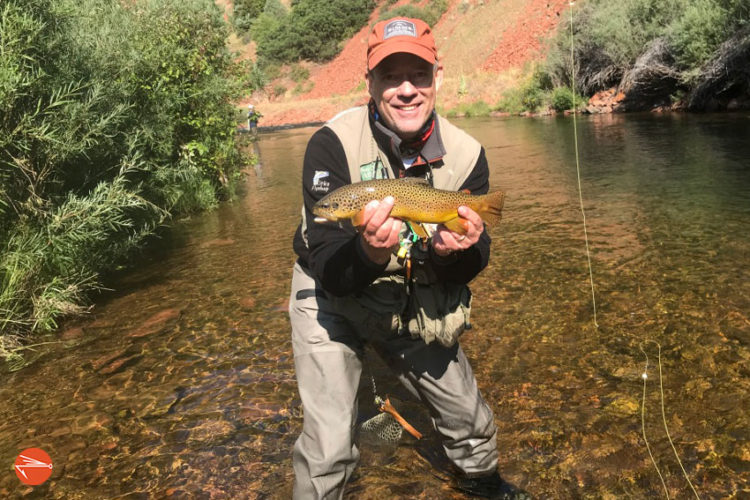






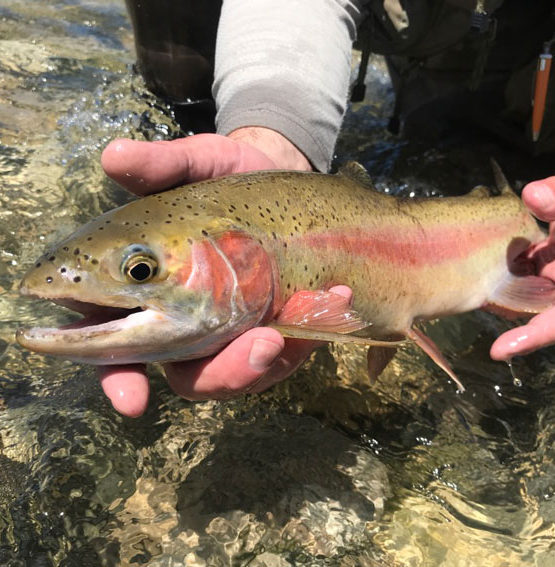
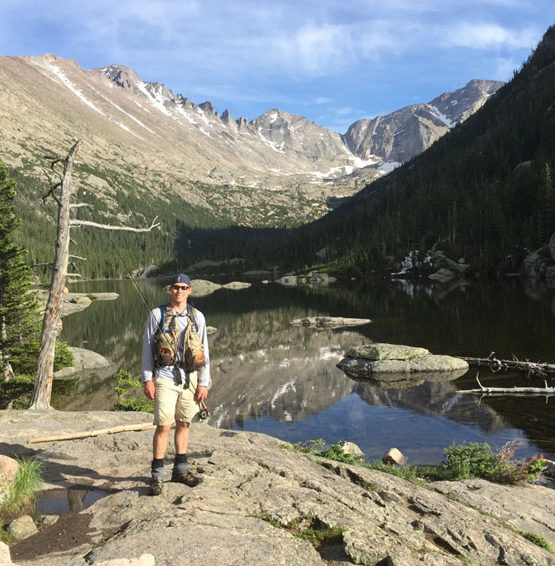
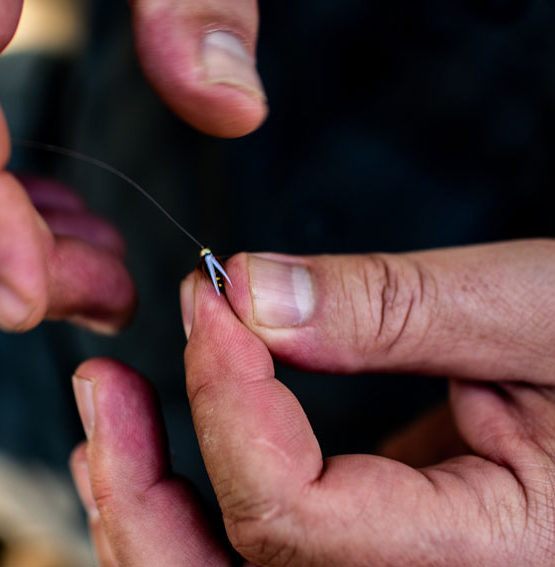
Thanks. Great article; I’m just getting started.
Thank you, Jack! We love hearing from our readers and appreciate kind words about our content. Please come back often and keep us posted on your progress.
Excellent write up, I have been fly fishing for 45 years. I have always enjoyed a great article to read there is always something to get out of it. It could be a small tip that I have spaced out or another approach to try. This past summer I introduced 2 guys to the fly fishing committee. We have taken small steps in beginning of their journey. I also tell them that great ideas, concepts, and approaches are everywhere. Patience is key.
Thanks again for the read!!
And thank you, Daniel, for the kind comments. Glad to hear about the two new additions to the “fly fishing committee.” (We got a good laugh out of that one!). Your advice is on the button: small steps and patience is key. Keep spreading the word!
Matt
Thank you for this. I’m so excited to have found your spot here on the web. I’ve decided I want to learn to fly fish. And this is just the place to help me get started!
Awesome, April! We love hearing that you want to learn to fly fish (welcome to our world) and that you’ve found our site. We sincerely hope it helps you. Keep us posted on your progress!
Matt
Thanks for the great read! I’ve been fishing the Eastern Sierra’s for many years, always telling myself “One of these days I’m going to learn how to fly fish”.
That time has come this year; along with my daughter; we are going to learn how to fly fish.
That’s fantastic! No time like the present to take up and, soon thereafter, fall in love with fly fishing. Stick with it, enjoy the learning and revel in the opportunity to spend some great times with your daughter.
Thank you for your comment. We hope you’ll come back to FlyFishingFix.com time and time again. Tight lines!